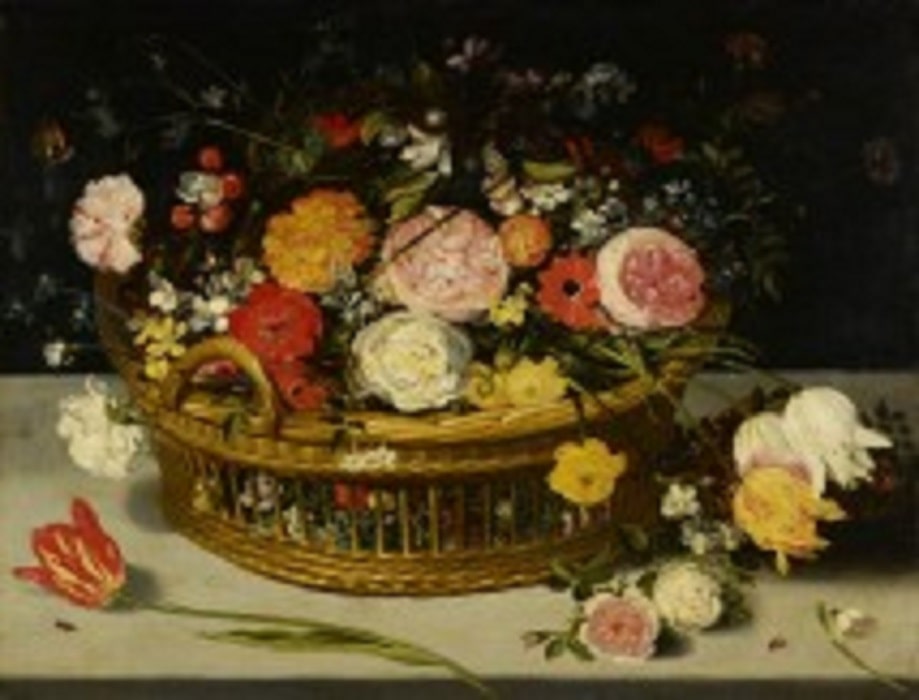Under the title “Lust for the Eye? Dutch Still Lifes in Detail”, the LVR-LandesMuseum Bonn will be presenting Dutch still lifes from the 17th century from 22 September 2022. The focus of the exhibition is not only the artistic quality of the paintings. The objects shown in the paintings make the complex world of life in the Netherlands at that time tangible.
Fig. above: Pieter Claesz. (?): Breakfast table with Romans and large pewter jug, c. 1640,oil on oak, 59 x 79 cm, Bonn, LVR LandesMuseum Bonn. © J. Vogel, LVR-LandesMuseum Bonn.
Sparkling glasses and the finest porcelain, juicy fruits and exotic spices: In Dutch still lifes of the 17th century, the eye can wander lustily and discover numerous treasures. The painterly rendering of the various objects is often of such perfection that one believes to see the real objects in front of one.
In the 17th century, the Netherlands was one of the world’s most advanced countries. While trading companies conquered international markets as global players, scientists revolutionised the image of reality by inventing telescopes and microscopes. At the same time, the arts and the art trade experienced a previously unimaginable heyday. The still lifes tell of these developments and achievements. At the same time, they provide a glimpse of the darker side of the economic and technical boom. After all, the precious objects arranged in the works of art first had to be produced, acquired or imported. Without hard work, colonial exploitation and unfair distribution of resources, the luxury to which the pictures bear witness could not have been achieved.
Conceived as a “slow exhibition”, the exhibition features 14 paintings as well as other objects such as globes, books and Venetian glassware. Luxury objects and everyday objects, some of which have never been seen outside the Netherlands, tell of life in the 17th century. Thus, the exhibition “Augenlust. Dutch Still Life in Detail” not only shows the quality of the artists, but also opens up a new, revealing view of the fates behind the pictures.
The exhibition was created in close cooperation with the important collection of the University of Amsterdam as well as in scientific collaboration with Prof. Birgit Ulrike Münch from the Art History Institute of the Rheinische Friedrich-Wilhelms-Universität Bonn.

THE PARTNERS
Art History Institute of the University of Bonn – Prof. Dr. Birgit Ulrike Münch
The Institute of Art History at the Rheinische Friedrich-Wilhelms-Universität Bonn emerged from the first official chair of art history in the world, which was established in 1860. Today it is one of the largest and most important art history teaching and research institutions in Germany. The subject of art history is represented here in its entire breadth.
Prof. Dr Birgit Ulrike Münch has held the professorship for general art history with a focus on the art of the Netherlands at the Art History Institute of the University of Bonn since 2016. Her research focuses on Dutch, Flemish, German and French art (painting and prints) from the late Middle Ages to the 18th century. She is particularly interested in iconographic questions, the social history of artists and spaces of the art public sphere(s). Currently, Prof. Dr. Münch is working on illness as an art driver and its visualisation.

EXHIBITION TEXTS
Lust for the Eye? Dutch Still Life in Detail
“The world-famous Amsterdam / the brightly shining pearl of the whole of the Netherlands” – this is what the first German-language travel guide to Amsterdam said in 1663. 200,000 people lived in the third largest city in Europe after Paris and London. Since the beginning of the 16th century, the population had increased twentyfold. The medieval city centre was extended by a triple canal ring from 1609. The names of the newly created canals reflect the self-image of Amsterdam’s wealthy merchants: the most expensive residential location was the Herengracht, not the Keizergracht!
Many factors contributed to the city’s breathtaking rise: its favourable geographical location with access to rivers and the sea, the decline of Antwerp, a major trading rival 200 km to the south, in the turmoil of the religious wars and, above all, the cosmopolitan attitude of the city’s rulers: people who had to leave their homeland for political or religious reasons found a new home here. Amsterdam became a trans-shipment centre for goods and ideas from all over the world and developed into the most important trading city of the 17th century…
WHERE?
LVR-LandesMuseum Bonn
Colmantstraße 14-16
53115 Bonn
WHEN?
Thursday, 22 September 2022 until Sunday, 19 February 2023
COST?
10 € / reduced € 7.50
Children and young people: free
admission up to 18 years
School classes: free admission






